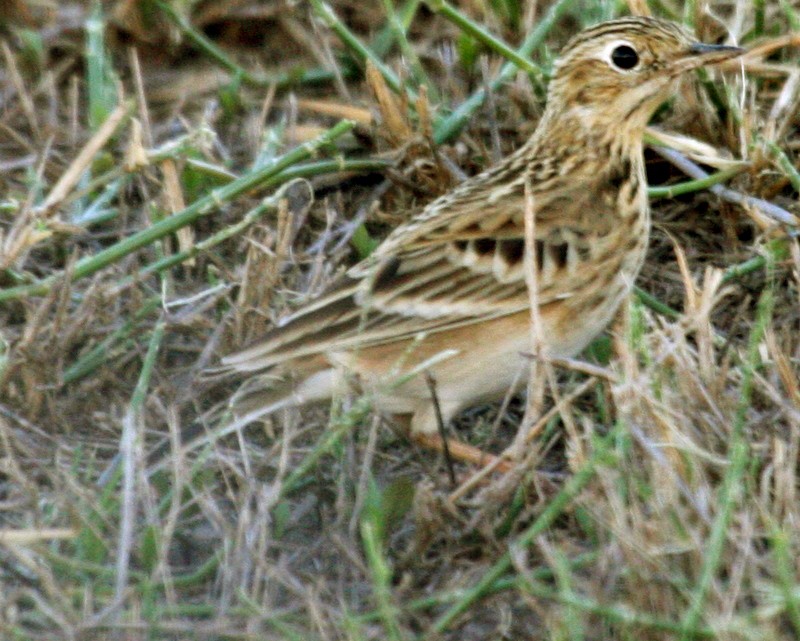Sprague's Pipit
A species of Pipits Scientific name : Anthus spragueii Genus : Pipits
Sprague's Pipit, A species of Pipits
Botanical name: Anthus spragueii
Genus: Pipits
Content
Description General Info
Description
Measurements: Length: 5.9-6.7 in (15-17 cm) Weight: 0.6-0.9 oz (18.2-27 g) Wingspan: 10 in (25.4 cm) 
Size
16-19 cm (6.25-7.5 in)
Life Expectancy
5 years
Nest Placement
Ground
Clutch Size
3 - 6 eggs
Incubation Period
1 - 3 broods
Number of Broods
12 - 15 days
Nestling Period
9 - 14 days
Feeding Habits
Sprague's Pipit predominantly feed on insects and arthropods like crickets, grasshoppers, and beetles by foraging alone and gleaning seeds or plucking insects from vegetation. In nonbreeding season, they incorporate grass and forb seeds into their diet, although specifics of winter diet are less documented.
Habitat
Sprague's Pipit's habitat spans the northern Great Plains' native mixed-grass prairies, which feature scattered shrubs and are surrounded by expansive native grassland. Ideal vegetation height for sprague's Pipit ranges from 6 to 12 inches in these prairies. The species avoids overgrazed or barren landscapes and does not nest in cultivated lands. During winter, sprague's Pipit relocates to native and non-native grasslands in Mexico and the southern U.S., with a preference for areas that have sparse shrub coverage.
Nest Behavior
During the nesting period, sprague's Pipit females meticulously build the nests, lay eggs, and, alongside males, engage in biparental care, with specific timings and patterns aligned with their breeding season.
Nest Characteristics
Sprague's Pipit's nest is ground-based in tall vegetation, featuring a cup-shaped structure approximately 3.3 inches wide and 1.9 inches tall, with an interior cup of 3 inches wide. The unique dome canopy is crafted by weaving live and dead grasses.
Dite type
Insectivorous
General Info
Feeding Habits
Bird food type
Behavior
Sprague's Pipit's behavior is characterized by their remarkable aerial song displays, which males perform up to 300 feet high to mark less than a quarter-acre territories. These territories, utilized for both nesting and foraging, range between 2.5 to 16 acres. Males may fiercely chase rivals in-flight to enforce boundaries. Parental duties are shared, with a decrease in male song flights while young are present in the nest. Post-nesting, sprague's Pipit may form small flocks before daylight migration. In the nonbreeding season, they tend to be solitary, although they might group in areas with abundant food.
Species Status
VULNERABLE. Population has declined rapidly.
Scientific Classification
Phylum
Chordates Class
Birds Order
Perching birds Family
Wagtails Genus
Pipits Species
Sprague's Pipit 